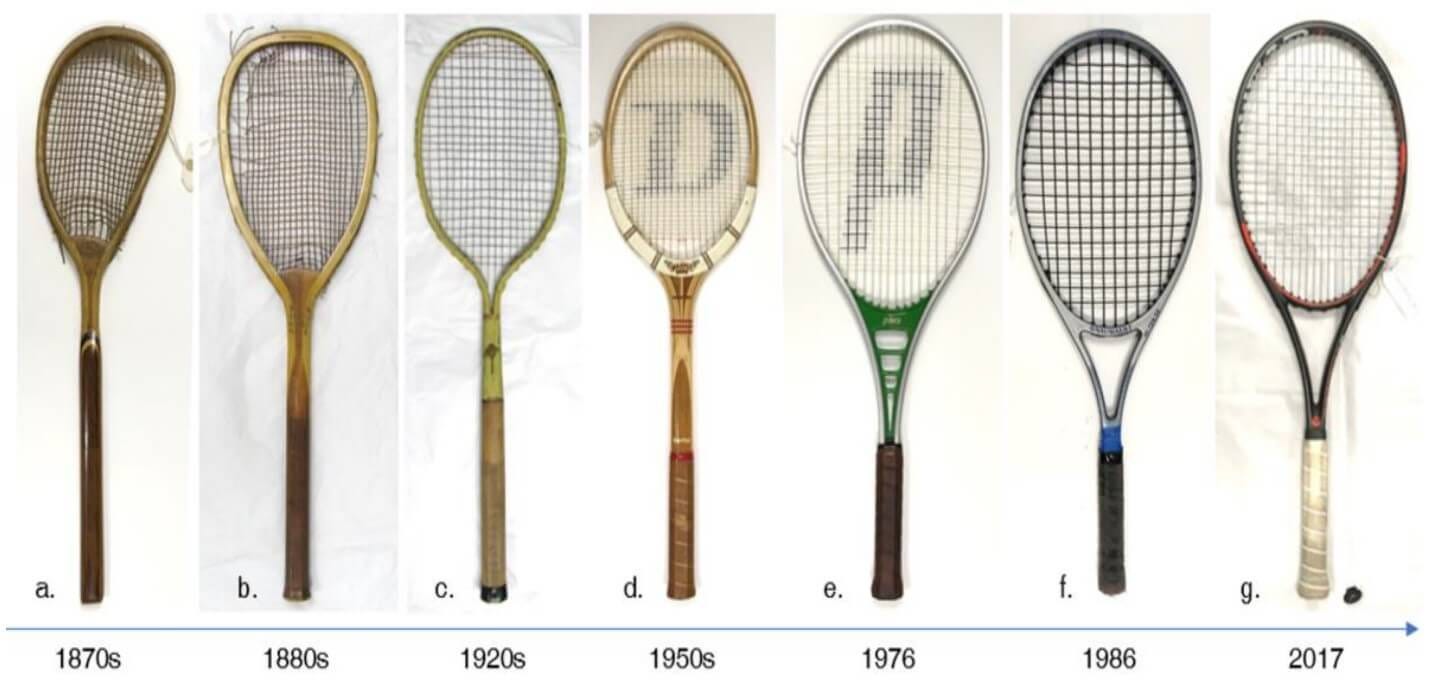The Evolution of the Tennis Racquet
why technology plays a vital role in its evolution
Sports, Tech, Biz is a weekly newsletter that features insights and analysis of the sports business. If you are not already a subscriber, join 1,000+ founders, investors, and professionals who read it every week:
The Evolution of the Tennis Racquet
Tennis racquets, bats, and clubs are part of the collection of sports objects that aim to extend the arm length and allow the athletes to reach for a ball outside their arm span.
These objects also provide more speed and power than a regular human arm could not afford.
Technology plays a vital role in the evolution of tennis racquets. They were different in the past.
Materials
Before the 1980s, racquets’ frames were primarily made from wood; distinguishing them from modern racquets is their relatively small elliptical hoops.
Most racquets are made from steel, aluminum, fiberglass, carbon fibers, graphite, foam, and hyper carbon.
Here’s a crazy fact about tennis:
Believe it or not, in the early days of tennis, almost all racquet strings were made from cow intestines. Today, most strings are made from nylon and polyester because its cheaper and more durable.
Depending on the athlete's preferences, mixing materials could provide variations in preferred stiffness, vibrations, weight, and power distribution.
Power Spot & Dead Spot
Tons of scientific studies made a great effort to improve the racquet physics for tennis athletes. Power and dead spot were key findings.
The power spot (also known as the sweet spot) is the place in the hoop that carries the most bounce strength.
It’s where the racquet strings vibrate best to translate your effort to kinetic energy for the ball – located at the racket's throat, near the center of mass.
In contrast, the dead spot (located at the top) is the place in the racquet that absorbs most of the kinetic energy without returning it to the ball.
The shift from small wooden racquets to what we have today is evident for racquet manufacturers after they figured this out.
Spin
Most players like to generate as much spin as possible when striking the ball.
The reason?
It allows the ball to dive onto the court quickly after it passes over the net, making it hard for opponents to reach it.
How does it happen?
String stretching.
Strings generate spin by stretching sideways and then snapping back into position while the ball is still on the strings.
This effect happens so fast you couldn't even see it.
When scientists discovered it, they started fabricating more slippery strings that could stretch and return to their original position after impact.
The Future of Tennis Racquets
In 40 years, science has made tons of progress in tennis racquets; however, there’s still room for improvement.
Combining various materials and modern manufacturing techniques gives athletes the most efficient solutions.
In tennis, factors such as grip, types of vibrations, and friction are some areas where racquets could be improved. Nevertheless, comparing what we have now to what we had only 40 years ago makes me wonder what racquets will look like in 15 years.







